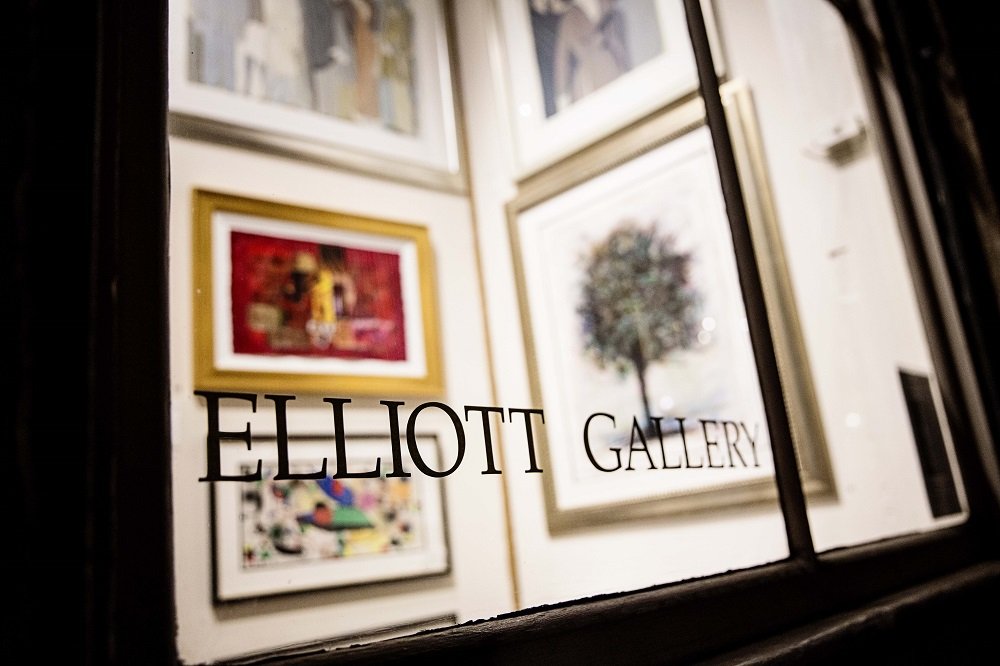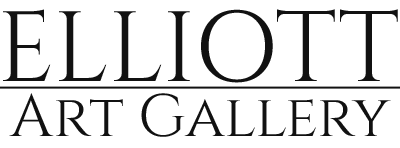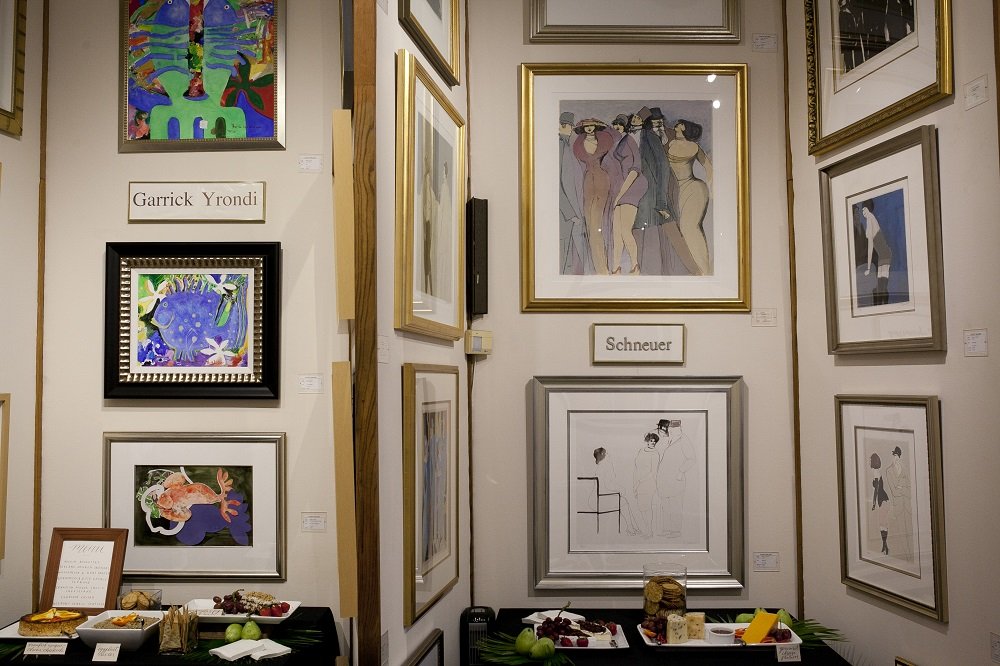How to Start an Art Collection: A Beginner’s Guide
Starting an art collection is exciting! But it can also feel overwhelming if you don’t know where to begin. At Elliott Gallery in New Orleans, we’ve been helping new collectors for decades. Whether you want to decorate your home, invest in emerging artists, or connect with the local art community, the right guidance can help you make confident choices and avoid costly mistakes.
In this beginner’s guide, you’ll learn how to define your goals, set a budget, explore different styles, and begin collecting pieces that you’ll enjoy for years to come.
Step 1 – Define Your Art Collecting Goals
Personal enjoyment vs. investment potential
Some collectors are driven by emotion and aesthetic joy, while others consider the financial value of their pieces. These art collecting tips can help you clarify your path.
Setting a collecting theme or focus
One of the most effective ways to build a cohesive and memorable art collection is to define a central theme or focus. This approach not only gives your collection visual harmony but also deepens your expertise in a particular niche.
You might choose to focus on a single artist, collecting different works across their career to see how their style evolves over time. This can create a compelling narrative within your collection and may also add investment value as the artist’s reputation grows.
Alternatively, you could concentrate on a specific style or movement – for example, contemporary abstraction, impressionist landscapes, or mid-century modern figurative work. By honing in on a style, you’ll develop an eye for subtle differences in technique, palette, and composition, making you a more confident buyer.
Another option is to collect by era or time period. Whether you’re drawn to the post-war boom of the 1950s, the bold experimentation of the 1980s, or emerging 21st-century talent, focusing on a period allows you to contextualize each piece historically and culturally.
The benefit of a focused collection is that it tells a story – both to others and to yourself. When guests view your collection, they’ll see a clear vision behind your choices, and you’ll have the satisfaction of knowing your acquisitions are part of a thoughtful, intentional journey rather than random purchases.

Step 2 – Set a Realistic Budget
How to buy quality art on a modest budget
Emerging artists, limited edition prints, or small-format originals offer strong entry points for budget-conscious collectors. This is a practical starting point for buying art for beginners.
Factors that influence price (artist, rarity, size, medium)
Several elements affect the cost of an artwork:
- Artist Reputation – Well-established artists with museum exhibitions and critical recognition typically command higher prices than emerging talent.
- Edition Size – In limited editions, smaller edition numbers often mean greater exclusivity and value.
- Medium – Oil paintings and bronze sculptures tend to cost more than works on paper because of durability, production complexity, and perceived prestige.
- Physical Dimensions – Larger works usually require more materials, time, and framing, making them more expensive. Small-scale works can still be highly significant if they’re rare or part of an important series.
How to Apply This:
If you’re aiming for long-term investment, focus on works from established or rapidly ascending artists in smaller edition sizes. For personal enjoyment, you can find exceptional value in emerging artists, smaller pieces, or less traditional mediums — all without sacrificing quality or impact.
Step 3 – Explore Different Art Styles and Mediums
Original paintings, limited edition prints, mixed media, sculpture
Original paintings are unique, prints offer affordability, and mixed media or sculptures can diversify the textures in your collection.
Understanding what resonates with you
Building a meaningful art collection starts with recognizing your personal tastes and emotional triggers. Spend time in galleries, museums, and art fairs observing what naturally draws your attention. Do you gravitate toward bold, abstract pieces, or do you prefer detailed realism? Are you moved by vibrant color palettes, or do you find comfort in muted, earthy tones?
Consider the stories behind the art as well. Sometimes a piece will resonate because of its subject matter, the cultural history it represents, or the artist’s personal journey. Keep a journal or photo log of the works you love and note the common elements – whether it’s the medium, composition, or mood.
Don’t be afraid to step outside your comfort zone. Art appreciation evolves over time, and a style that feels unfamiliar today may become a favorite tomorrow. The goal is to identify patterns in your preferences while leaving room for discovery. This self-awareness will not only make collecting more enjoyable but will also guide you toward pieces you’ll cherish for years.
Step 4 – Know Where to Buy Your First Piece
The value of visiting galleries
Visiting the gallery in person lets you appreciate details you can’t see online- like surface texture and scale- and allows for personalized guidance from knowledgeable staff.
Online art marketplaces vs. in-person buying
Online shopping offers convenience, but be sure to verify authenticity, return policies, and image quality before purchasing.
Attending art events and fairs in New Orleans (localized)
Events like annual fundraisers for local museums including the Magnolia Ball by Ogden Museum of Southern Art or those held by the New Orleans Museum of Art are vibrant ways to meet artists and experience art in the community firsthand.
Step 5 – Authenticate and Care for Your Art
Certificates of Authenticity and Provenance
When purchasing art, especially from recognized or investment-grade artists, a certificate of authenticity (COA) is essential. This document, typically signed by the artist, their estate, or an authorized representative, confirms the work’s originality, medium, and creation date. Without a COA, reselling the piece in the future can be difficult, and its value may be questioned by buyers or appraisers.
Equally important is the provenance, which is the documented history of an artwork’s ownership. Provenance can include gallery sales records, auction results, exhibition histories, and previous appraisals. A strong provenance not only reinforces authenticity but can also increase the perceived value of a piece – particularly if it has been displayed in notable exhibitions or was once owned by a prominent collector.
By working with a reputable gallery like Elliott Gallery, you ensure that every acquisition is accompanied by the proper documentation, safeguarding your collection for years to come.
Appraisals and Insurance for New Collectors
An appraisal is a professional evaluation of an artwork’s current market value, conducted by a certified appraiser. For new collectors, scheduling an appraisal shortly after purchase establishes a baseline value that can guide insurance coverage and future resale decisions. Because the art market can change over time, periodic reappraisals (every 2–5 years) are recommended to keep valuations up to date.
Once you know the value of your collection, insurance becomes essential. Standard homeowners or renters’ insurance policies often provide limited coverage for fine art – and may not protect against damage during transit, theft, or natural disasters. Specialized fine art insurance policies offer broader protection, covering restoration costs, loss in value after restoration, and worldwide transit coverage.
By investing in proper appraisals and insurance, you not only protect the financial value of your art but also ensure peace of mind, knowing your collection is safe from unexpected loss.
Step 6 – Frame and Display Your Art
How framing protects and enhances your investment
A well-chosen frame is more than just decoration – it’s a crucial layer of protection for your artwork. Professional framing safeguards pieces from environmental hazards such as dust, humidity, and UV light, which can cause fading, discoloration, and structural damage over time. High-quality materials, like acid-free mats and UV-filtering glass or acrylic, ensure that your art is preserved without chemical deterioration.
Framing also enhances the presentation of your artwork, drawing the viewer’s eye and complementing the piece’s colors, textures, and style. The right frame can create a sense of cohesion within your collection, especially if you display multiple works in the same space. In some cases, a thoughtfully designed frame can even increase the perceived value of a piece by giving it a gallery-ready or museum-quality finish.
By investing in professional framing, you’re not only protecting your art physically but also elevating its visual impact, ensuring it remains a cherished and valuable part of your collection for years to come.
Custom framing options at Elliott Gallery
Elliott Gallery offers museum-quality, in-house custom framing services. Catherine Martens Betz and Ken Nahan handle design and construction.
Step 7 – Build Relationships in the Art World
Connecting with galleries, artists, and collectors
Cultivating relationships can lead to invitations to previews, special events, and personal introductions to artists.
Joining art events like art museum fundraisers to meet local artists
Being part of local art community in New Orleans by attending events helps you build insight, friendships, and a richer collecting experience.
Ready to Start Your Collection?
Whether you’re buying your first piece or expanding your collection, Elliott Gallery is here to help. Visit us at our Royal Street location, browse our curated selection, or contact us for a consultation.

